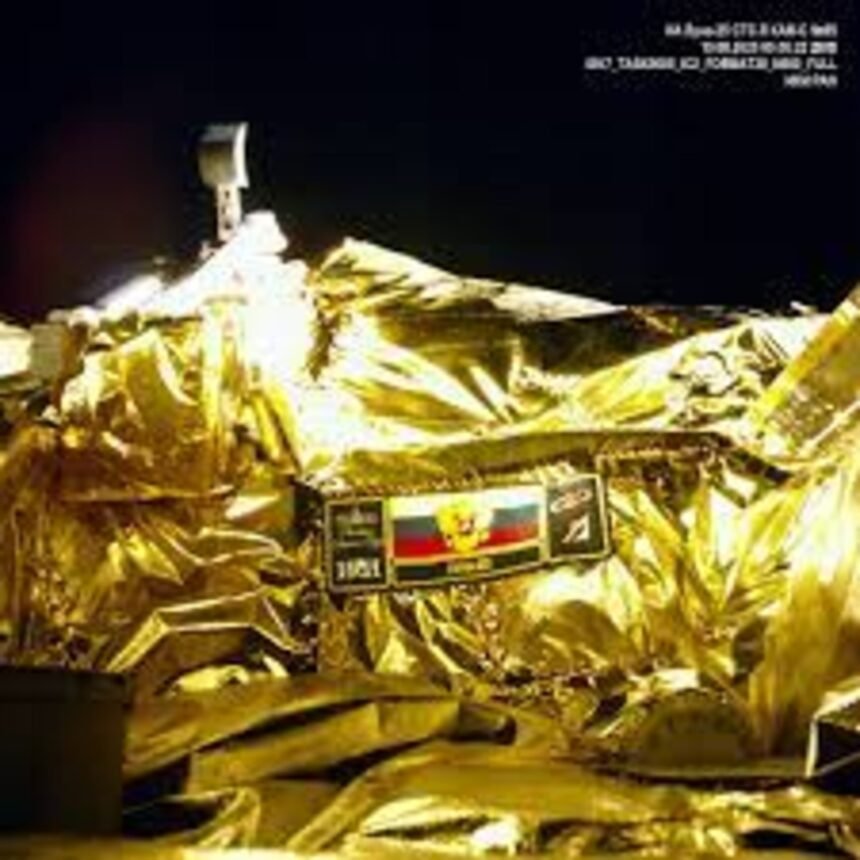Introduction
In a momentous achievement for Russia’s space program, the Luna-25 spacecraft has embarked on a historic journey to the Moon, rekindling the nation’s lunar exploration efforts after a hiatus spanning nearly five decades. The spacecraft, which was launched on August 11 from the Vostochny Cosmodrome in Russia’s far eastern Amur Region. It is now en route to the lunar surface, poised to carry out an intricate study of our celestial neighbor.

The last time Russia set its sights on the Moon was in 1976, when the Luna-24 mission brought back soil samples from the lunar surface. Now, with the successful launch of Luna-25, Russia is once again taking its place among the ranks of nations exploring the mysteries of outer space.
The spacecraft’s initial images, received and transmitted back to Earth, are a testament to its successful journey thus far. The black-and-white photo collection features iconic representations of Russia, including the country’s flag and mission patch proudly displayed on the spacecraft’s exterior. These images serve as a symbol of Russia’s dedication to advancing space exploration and expanding human knowledge beyond the confines of our planet.
However, the significance of Luna-25’s mission extends far beyond mere symbolism. This latest lunar lander mission is part of a global resurgence in lunar exploration, with various countries striving to unlock the secrets of Earth’s natural satellite. Luna-25 joins an ever-expanding list of international moon missions, each aiming to uncover the Moon’s mysteries from different perspectives.
Well equipped Spacecraft
The Luna-25 spacecraft is equipped with a suite of advanced instruments designed to analyze the composition of the moon’s surface, study its thin atmosphere, and search for vital resources such as water ice. Among the eight instruments carried by the lander are a laser mass spectrometer and a device capable of analyzing chemical compositions of lunar soil samples. These tools are poised to yield ground breaking insights into the Moon’s geological and atmospheric makeup.
The mission’s primary objective, however, is to conduct a year-long investigation into the moon’s surface and atmosphere. Luna-25 will orbit the Moon for five to seven days before attempting a targeted landing near one of the three craters surrounding the lunar south pole. This region, with its intriguing potential for harboring water ice and valuable resources, is a hotspot for lunar exploration due to its scientific significance and potential implications for future space exploration endeavors.
While there were initial concerns about Luna-25’s condition following its launch, the recently received images confirm that the spacecraft is in excellent health and progressing smoothly toward its intended lunar destination. The Space Research Institute of the Russian Academy of Sciences (IKI RAS) reported that all systems are operating normally, communication is stable, and the energy balance is positive.
Conclusion
Russia’s reentry into lunar exploration after nearly fifty years underscores the nation’s enduring commitment to scientific discovery and technological advancement. Luna-25’s mission is a beacon of hope, signaling that the quest to explore and understand the cosmos continues to inspire nations across the globe. As Luna-25 embarks on its pioneering expedition, it not only carries the aspirations of Russia’s space program but also represents humanity’s collective curiosity about the vast universe that surrounds us.






